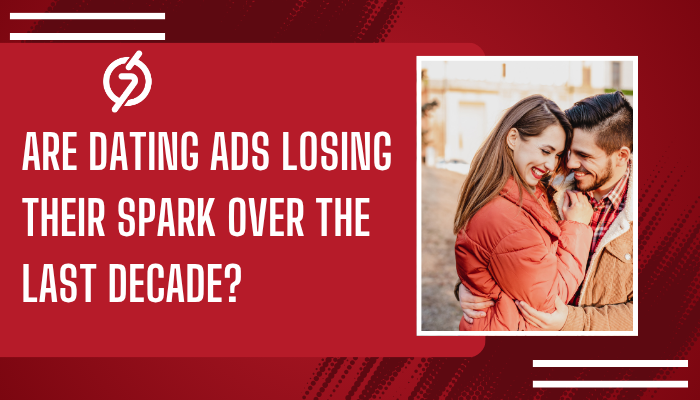Hook
A decade ago, dating platforms were the new frontier of digital romance—and advertisers were quick to jump in. In 2015, global online dating ad spending was estimated at around $450 million. Fast forward to now, and the landscape looks completely different. Dating ads still exist everywhere, but their impact feels a little faded. The spark that once made these campaigns exciting seems to have dimmed.
It’s not because people stopped looking for love online. Far from it—more than 350 million users now interact with dating platforms every month. The issue lies in how Dating Ads are being presented, and more importantly, how advertisers are adapting (or failing to adapt) to new expectations, privacy shifts, and user behavior changes.
When Engagement Starts to Fade
Advertisers who work with dating platforms often hit a frustrating wall. Clicks are plenty, but conversions? Not so much. You might notice higher costs per lead, fewer sign-ups, and declining user engagement despite a steady ad spend.
So, what happened?
The dating audience has evolved. People are more selective, privacy-conscious, and resistant to traditional banner-style online dating ads. The quick-swipe culture means attention spans are short, and trust is low. Even the best visuals or taglines can go unnoticed if the ad feels generic or repetitive.
For advertisers, this creates a double bind—either increase spend to stay visible or innovate smarter to earn real engagement. Unfortunately, many still rely on outdated campaign formats that once worked but now barely make a dent.
Shifting Audience Behavior and Market Dynamics
Today’s dating app users are digital natives. They’ve grown up with targeted ads, influencer campaigns, and algorithm-driven recommendations. The novelty of seeing “Find your match now!” no longer drives excitement—it just blends into the noise.
The real change? Emotional context.
In the past, dating advertisements leaned on aspiration—finding love, romance, connection. Now, users crave authenticity and compatibility. Ads that show real experiences, diversity, and relatable dating moments perform far better than those that rely on glamour or cliché storytelling.
Another factor shaping the decline in ad impact is ad fatigue. With multiple dating platforms competing for the same audience—Tinder, Bumble, Hinge, OkCupid, and countless niche apps—users are exposed to hundreds of dating promotions every week. When every ad promises “the one,” it’s hard for any single campaign to stand out.
This is where smart advertisers start to analyze not just who they’re targeting, but how they’re doing it.
Smarter Ad Approaches Revive the Spark
The truth is, Dating Ads aren’t dying—they’re just maturing. The advertisers who adapt to audience psychology, use smarter targeting, and refine creative storytelling are still seeing strong returns.
Instead of pushing romantic clichés, brands are shifting toward intent-based messaging. For instance, using first-party data to reach users who recently searched for “relationship advice” or “local singles” delivers far more meaningful impressions. Pair that with conversational ad copy, and the engagement rate often doubles.
Platforms that specialize in dating verticals, such as Dating Ad Networks For Dating Websites, offer better segmentation and contextual placements. They understand that dating traffic behaves differently than e-commerce or gaming audiences. When your ads appear in relevant environments—like dating blogs, relationship forums, or compatible apps—they don’t just get seen; they get remembered.
Retargeting and audience layering also help revive performance. For example, showing specific creatives to users who clicked but didn’t sign up keeps your brand top of mind without bombarding them.
And don’t forget storytelling. Smart advertisers are turning static promotions into dynamic experiences—short videos, polls, and even quiz-style formats like “Find your match type.” These not only drive engagement but also make users feel part of the ad journey rather than being sold to.
Why Many Dating Campaigns Still Miss the Mark
Even with access to advanced tools, many advertisers underperform because they ignore key fundamentals:
- Lack of personalization: Users want ads that feel designed for them, not a crowd.
- Poor landing page experience: A catchy ad that leads to a generic page kills momentum.
- Weak targeting: Casting too wide a net results in wasted impressions and lower ROI.
- Ignoring ad fatigue: Repeating the same creatives reduces effectiveness over time.
By addressing these pitfalls, brands can prevent their dating advertising from feeling stale or uninspired.
The Evolution of Dating Ad Formats
A decade ago, banner ads and static displays ruled the market. Now, dynamic, data-driven formats have taken over.
- Native ads fit seamlessly within dating content.
- Video ads capture emotional attention and showcase app features more vividly.
- Interactive content like swipe polls or compatibility quizzes mirror user behavior on dating apps themselves.
Modern dating advertisers are blending technology and storytelling to stay relevant. The spark isn’t gone—it’s just waiting for creative energy to ignite it again.
The Mobile Shift
Roughly 80% of dating traffic now comes from mobile devices. That means ad creatives must be vertical, quick to load, and visually optimized for smaller screens. Long texts and tiny buttons are conversion killers.
Advertisers focusing on mobile-first ad formats report up to 3x better engagement rates compared to those still running desktop-heavy campaigns. This shift reinforces the idea that understanding user context—time of day, location, and device—makes all the difference in campaign outcomes.
Smart ad networks specializing in Dating Ads that help advertisers match the right creative to the right audience moment, improving both relevance and ROI.
Practical Tips for Advertisers to Rekindle Dating Ad Performance
If your recent campaigns feel like they’ve lost their spark, here are some tested adjustments that can help:
- Focus on emotion, not just features. Show moments of connection or relatable situations rather than app screenshots.
- Use data smartly. Build lookalike audiences based on successful converters.
- Experiment with storytelling formats. Short clips or relatable narratives outperform plain CTAs.
- Test new placements. Niche ad networks often outperform major ones for dating verticals.
- Keep refreshing creatives. Rotate ads frequently to prevent fatigue.
- Optimize landing pages. Ensure that sign-up flows are mobile-friendly and frictionless.
Remember, every dating campaign should reflect empathy—because at the heart of this vertical lies human connection.
Ready to Bring Back the Spark?
If you’re looking to give your campaigns an edge, it might be time to rethink your strategy and explore ad networks designed for dating traffic. Specialized networks understand what resonates with this audience and can help deliver the results your brand deserves.
You can start exploring options or even create a dating ad campaign that’s optimized for real engagement, not just impressions.
Conclusion
The dating ad market isn’t dying—it’s evolving. The advertisers who cling to old formats are the ones feeling the burnout. But those who listen to the audience, humanize their message, and embrace smarter targeting still find plenty of spark left to ignite.
So, if you’ve been wondering whether Dating Ads still work, the answer is yes—but only if you’re willing to evolve with your audience. After all, even love stories need a little refresh once in a while.
Read More: https://nwacolorado.org/how-to-use-ppc-platforms-to-advertise-matchmaking-sites/
Read More: https://magic.ly/datingads/How-to-compose-conversion-ready-ad-copy-for-casual-encounter-ads
 :
https://www.pinterest.com/7search_ppc_ads/
:
https://www.pinterest.com/7search_ppc_ads/

